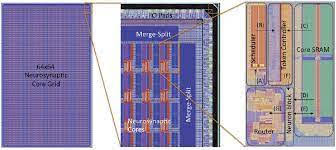AIM is an abbreviation for Artificial Intelligence in Medicine.
It is included in the field of Medical Informatics.
Artificial Intelligence in Medicine (the journal) publishes unique papers on the theory and application of artificial intelligence (AI) in medicine, medically-oriented human biology, and health care from a range of multidisciplinary viewpoints.
The study and implementation of ways to enhance the administration of patient data, clinical knowledge, demographic data, and other information related to patient care and community health is known as medical informatics.
It is a relatively new science, having arisen in the decades after the 1940s discovery of the digital computer.
What Is Artificial intelligence's Importance in Healthcare and Medicine?
- Artificial intelligence can help physicians choose the best cancer therapies from a variety of possibilities.
- AI helps physicians identify and choose the right drugs for the right patients by capturing data from various databases relating to the condition.
- AI also supports decision-making processes for existing drugs and expanded treatments for other conditions, as well as expediting clinical trials by finding the right patients from a variety of data sources.
What role does artificial intelligence play in medicine and healthcare?
Medical imaging analysis is aided by AI.
It aids in the evaluation of photos and scans by a doctor.
This allows radiologists and cardiologists to find crucial information for prioritizing urgent patients, avoiding possible mistakes in reading electronic health records (EHRs), and establishing more exact diagnoses.
What Are The Advantages of AI in Healthcare?
Artificial intelligence (AI) has emerged as the most potent agent of change in the healthcare business over the previous decade.
Learn how healthcare professionals might profit from artificial intelligence.
There are several potential for healthcare institutions to use AI to offer more effective, efficient, and precise interventions to their patients, ranging from diagnosis and risk assessment to treatment technique selection.
AI is positioned to generate innovations and benefits throughout the care continuum as the amount of healthcare data grows.
This is based on AI technologies and machine learning (ML) algorithms' capacity to provide proactive, intelligent, and often concealed insights that guide diagnostic and treatment decisions.
When used in the areas of improved treatment, chronic illness management, early risk detection, and workflow automation and optimization, AI may be immensely valuable to both patients and clinicians.
Below are some advantages of adopting AI in healthcare to assist providers better grasp how to use it in their ecosystem.
Management of Population Health Using AI.
Healthcare companies may utilize artificial intelligence to gather and analyze patient health data in order to proactively detect and avoid risk, reduce preventative care gaps, and get a better understanding of how clinical, genetic, behavioral, and environmental variables influence the population.
Combining diagnostic data, exam results, and unstructured narrative data provides a complete perspective of a patient's health, as well as actionable insights that help to avoid illness and promote wellness.
AI-powered systems may help compile, evaluate, and compare a slew of such data points to population-level trends in order to uncover early illness risks.
As these data points are accumulated to offer a picture into the population, predictive analytics may be obtained.
These findings may subsequently be used to population risk stratification based on genetic and phenotypic variables, as well as behavioral and social determinants.
Healthcare companies may use these insights to deliver more tailored, data-driven treatment while also optimizing resource allocation and use, resulting in improved patient outcomes.
Making Clinical Decisions Using AI.
Artificial intelligence may help minimize the time and money required to assess and diagnose patients in some healthcare procedures.
Medical workers may save more lives by acting quicker as a result of this.
Traditional procedures cannot detect danger as quickly or accurately as machine learning (ML) algorithms can.
These algorithms, when used effectively, may automate inefficient, manual operations, speeding up diagnosis and lowering diagnostic mistakes, which are still the leading cause of medical malpractice lawsuits.
Furthermore, AI-enabled technologies may assemble and sift through enormous amounts of clinical data to provide doctors a more holistic perspective of patient populations' health state.
These technologies provide the care team with real-time or near-real-time actionable information at the proper time and location to improve treatment outcomes dramatically.
The whole care team may operate on top of licensing by automating the gathering and analysis of the terabytes of data streaming inside the hospital walls.
Artificial Intelligence-Assisted Surgery
Surgical robotics applications are one of the most inventive AI use cases in healthcare.
AI surgical systems that can perform the slightest motions with flawless accuracy have been developed as AI robotics has matured.
These devices can carry out difficult surgical procedures, lowering the typical procedure wait time as well as the danger of blood loss, complications, and other adverse effects.
Machine learning may also help to facilitate surgical procedures.
It may give surgeons and healthcare workers with real-time data and sophisticated insights into a patient's present status.
This AI-assisted data allows them to make quick, informed choices before, during, and after surgeries to assure the best possible results.
Improved Access to Healthcare Using AI.
As a consequence of restricted or no healthcare access, studies indicate considerable differences in average life expectancy between industrialized and developing countries.
In terms of implementing and exploiting modern medical technology that can provide proper treatment to the public, developing countries lag behind their peers.
In addition, a lack of skilled healthcare personnel (such as surgeons, radiologists, and ultrasound technicians) and appropriately equipped healthcare facilities has an influence on care delivery in these areas.
To encourage a more efficient healthcare ecosystem, AI can offer a digital infrastructure that allows for speedier identification of symptoms and triage of patients to the appropriate level and modality of treatment.
In healthcare, AI may assist alleviate a scarcity of doctors in rural, low-resource locations by taking over some diagnostic responsibilities.
Using machine learning for imaging, for example, enables for quick interpretation of diagnostic investigations like X-rays, CT scans, and MRIs.
Furthermore, educational institutions are increasingly using these technologies to improve student, resident, and fellow training while reducing diagnostic mistakes and patient risk.
AI To Improve Operational Efficiency and Performance Of Healthcare Practices.
Modern healthcare operations are a complicated web of intricately linked systems and activities.
This makes cost optimization challenging while also optimizing asset usage and guaranteeing minimal patient wait times.
Artificial intelligence is rapidly being used by health systems to filter through large amounts of big data inside their digital environment in order to generate insights that might help them improve operations, increase efficiency, and optimize performance.
For example, AI and machine learning can:
(1) improve throughput and effective and efficient use of facilities by prioritizing services based on patient acuity and resource availability,
(2) improve revenue cycle performance by optimizing workflows such as prior authorization claims and denials, and
(3) automate routine, repeatable tasks to better deploy human resources when and where they are most needed.
When used effectively, AI and machine learning may give administrators and clinical leaders with the knowledge they need to enhance the quality and timeliness of hundreds of choices they must make every day, allowing patients to move smoothly between different healthcare services.
The rapidly growing amount of patient data both within and outside of hospitals shows no signs of slowing down.
Healthcare organizations are under pressure from ongoing financial challenges, operational inefficiencies, a global shortage of health workers, and rising costs.
They need technology solutions that drive process improvement and better care delivery while meeting critical operational and clinical metrics.
The potential for AI in healthcare to enhance the quality and efficiency of healthcare delivery by analyzing and extracting intelligent insights from vast amounts of data is boundless and well-documented.
What role does AI play in medicine and informatics in the future?
According to Accenture Consulting, the artificial intelligence (AI) industry in healthcare is estimated to reach $6.6 billion by 2021.
From AI-based software for managing medical data to Practice Management software to robots helping surgeries, this creative technology has led to numerous improvements.
Find Jai on Twitter | LinkedIn | Instagram
Be sure to refer to the complete & active AI Terms Glossary here.
You may also want to read more about Artificial Intelligence here.
















